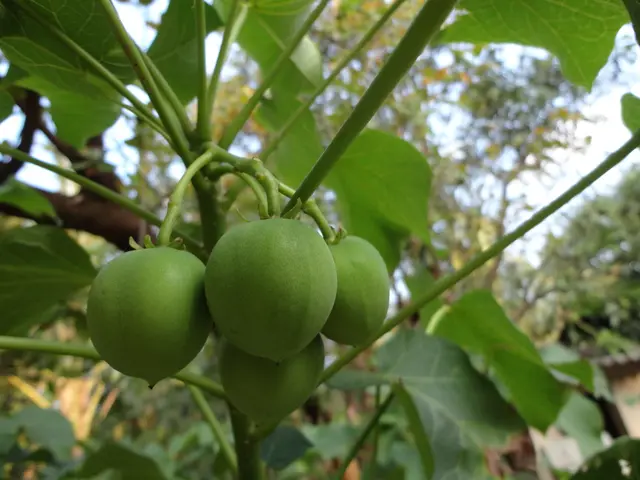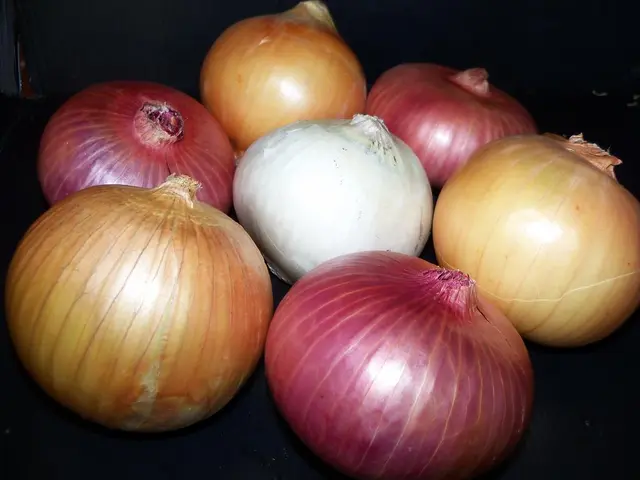Garden Preparation To-Do List for the Emerging Season
Freshening Up Your Early Spring Garden: A Comprehensive Checklist
Spring is just around the corner, and it's time to get your garden in shape! As I've learned to extend my growing season and plan my garden more efficiently, I've started preparing well before my average last frost date. Here's what I do in my garden around this time, approximately one month before my average last frost date:
Planting Tasks
Cool-weather crops are the perfect choice for this season, as they can tolerate frost and many can even survive a freeze. These crops can usually be planted 4-6 weeks before your average last frost date. I plant onions, potatoes, peas, carrots, beets, spinach, arugula, and other greens, as they are able to withstand frost and need cooler weather. Cabbage and broccoli transplants are also planted four weeks before your average last frost date.
Now's also a great time to start peppers and tomatoes indoors, about 6 weeks before your average last frost. I've also been starting squash, zucchini, and cucumbers in soil blocks indoors about 3 weeks before I want them in the ground. They don't always transplant well, and you need to wait a bit longer than tomatoes to get them started.
Don't forget that this is an excellent time to plant bushes and trees, especially before they bloom. Blueberry bushes or fruit trees are fantastic additions to the garden, and the flowers will help attract beneficial insects you want hanging around.
Remember, as you plant these crops or start seeds indoors, make sure you jot it down! You'll learn important lessons every year as you take notes about your garden.
Gathering Tasks
If you have any new raised beds, or if any of your raised beds or containers need new soil, start gathering those materials now. Also, start thinking about mulch now before the weeds take over your garden and obtain those supplies so you have them on hand when you need them.
If you haven't yet, commence gathering seeds of your warm-weather crops that will be directly sown into the garden. This includes beans, corn, black-eyed peas, cucumber, squash, watermelons, melons, okra, and anything else that can't be planted outdoors until after the danger of frost has passed. When it's time to plant, you won't need to be scavenging for seeds!
Additionally, start procuring any new garden tools you realize you'll need. Last year, I knew I needed a new hoe and found one at our local garden show. Think about pruners, weeding tools, gloves, or anything else you will need in the coming months. Check out my favorite tools for the garden.
Projects
One of the first things I do this time of year is to make sure my garlic and onion beds are weeded and covered with mulch. These crops have a hard time competing with weeds, so I need to make sure they can grow properly.
Next, now is a great time to add compost or organic fertilizers to your perennial crops. For example, I fertilize my blueberry bushes with a little nitrogen like cottonseed meal or soybean meal. You can also use composted manure for bushes and trees. Remember to check on the mulch around these crops and add more as needed.
If you plan to build any DIY garden projects – like trellises or raised beds – this is the time. Finally, don't forget to amend your soil with compost. Your ground beds, raised beds, and containers are ready for extra nutrition to get your plants through the season. If you put it on now, there's plenty of time for it to break down more so that all of its nutrients are ready for your crops.
So, there you have it! These are the things I'm doing now, about a month before my average last frost date, to get ready for the busy gardening season. Tune in to the Beginner's Garden Podcast for more details.
If I've missed something on this spring garden checklist, I'd love to hear what else you're doing in your garden!
Struggling with Garden Planning?
Don't let garden planning overwhelm you! Sign up for my free 7-day garden plan to conquer your garden in just seven days. You'll also get my "In the Garden E-mail" on Fridays, periodic updates on garden resources relevant to you, and access to my entire bank of free garden downloads!
Plus, you're agreeing to our privacy policy.
Success! Now, check your email to access your 7-day garden plan, plus several free downloadable garden resources!
There was an error submitting your subscription. Please try again.
- To ensure your garden thrives during early spring, explore garden printables for help with planning your garden layout.
- For efficient garden planning, consider using a garden planner app or tool to keep track of your crops, planting dates, and expected harvest times.
- To make the most of your gardening efforts, research home-and-garden lifestyle blogs, such as those offering gardening articles and resources.
- If you're looking for inspiration or tips on gardening and planning, don't forget to tune into the Beginner's Garden Podcast for valuable insights and discussions.
- For comprehensive resources on every aspect of gardening, explore garden resources online that cater to both experienced and novice gardeners alike.








